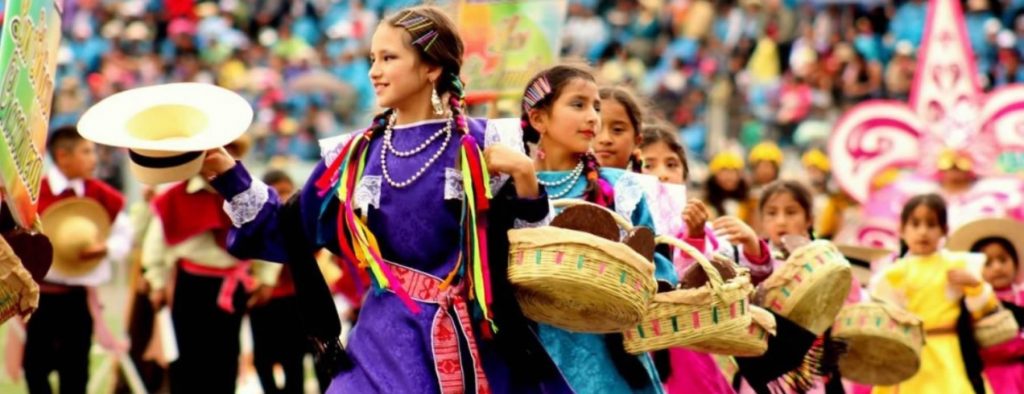The month of February hosts a magic “party and joy” that is enjoyed not only in Peru, but in many countries of the world. Yes; you got it right! We are talking about “Carnival”; the party in which one can be, for a short period of time, whatever he wants to be.
Carnivals in Perú.
As you can imagine, this festival arrived in Peru with the Spanish people and has two very characteristic connotations, the first one is that of a “folk festival” and the other one is “games with water and colors.” In most cases both are combined in a single celebration that begins in February and continues throughout the whole month.
Especially in Spanish colonial times, The Carnival was used for satire and parody. Authorities and slaves alike were represented with costumes and masks. Rosa María Acosta, author of “Urban Colonial Festivities (Lima-Cuzco-Potosí)”, has an interesting note; that the Carnivals also served to resolve pending disputes: “It was very common to see, the day after the carnivals, Spaniards and Indians lying together drunk on the ground,” she says.
This party was not limited to Spaniards and indigenous Peruvians; “The carnival brought from Spain was quickly vindicated by the popular classes, and it was the black people; who were the majority slaves in Lima at the end of the 18th century – who gave a festive traits with their dances and masks ”, wrote the anthropologist Prof. Vilcapoma.
El Diablo (The Devil)
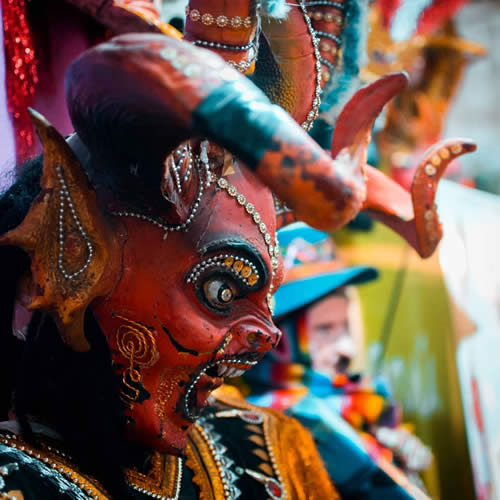
Foto: @mariano_fusero
A figure that stands out in Peruvian carnivals is the figure of the “Devil”. Looking at the processes and socio-cultural manifestations of the encounter of colonizers and indigenous people, it can be deduced how the image of the devil is simply a “collective composition” of the inhabitants of the New World, indigenous, black slaves and Spanish. Another important fact is that it highlights the relationship between “idol and image” in the construction of new cultures in the new world, because this generated other “types of images”, fused images that at the same time re-structured the cosmo-vision, the worldview of both worlds.
There is a well-known song in Peru by the musical group “los morochucos” that expresses precisely this custom and is called “Son de los diablos (The Rhythm of the Devil)” with a text that says:
“venimos de los infiernos
no se vayan a asustar
Con nuestros rabos y cuernos
que son sólo pa´ bailar.
Con nuestros rabos y cuernos,
que son sólo pá bailar.
Son de los Diablos son
y aquí vamos a bailar;”.
“We come from hell
Do not be scared….
With our tails and horns
That are just for dancing.
With our tails and horns,
That are only for dancing.
In rhythm of the Devils are
And here we are going to dance”…
Carnivals in the Andes of Peru.
These festivities not only stayed in the capital, they were popular throughout the Peruvian territory, and definitely in the Andean areas of Peru highlights for its fusion with the spirituality of the Andean people. It can be said that this European custom has been merged with the traditional harvest festivals in Peru, known as Pukllay, which in Quechua means “games”. For José Carlos Vilcapoma, historian and anthropologist specialized in the Andean tradition, other names are: Chimaycha, Huayllacha, Capac Pucuy and Huaylas.
In fact, Vilcapoma recalls that the first reference is found in Francisco de Ávila’s manuscript, probably from 1598, where he mentions some dances called “huayllas”. In 1966, José María Arguedas, in the translation entitled “Gods and men of Huarochirí”, identifies these dances as the harvest festivities that are celebrated in the Mantaro Valley.
Among the most representative carnivals in Peru we have:
Feast of the Virgin of Candelaria in Puno city (Fiesta de la Virgen de la Candelaria)
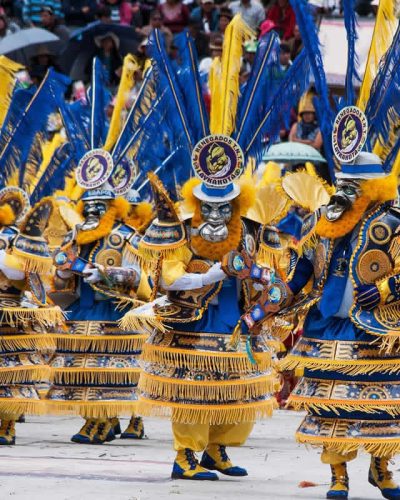
Image: @chambiperuska
This grandiose celebration takes place in the city of Puno -on the shores of Lake Titicaca- between February 1 and 14 of each year, with the second day of the month as its central date. Before the party, there is a period called “novenario”, in which the assistants dedicate themselves to decorating the temple of the Virgin, located in front of the Plaza de Pino. The celebration begins at 4 am on the first day of the month with the so-called “albas” or early morning.
Hundreds of people fill the main streets of the city to observe the numerous groups that parade in the middle of a great artistic setting and also to venerate the image of “Mamacha Candelaria”, patron saint of Puno, who goes out in procession.
The festival concludes with the farewell or Cacharpari, in which the Virgin, located at the door of the temple, greets the crowd and says goodbye to all people until the following New Year. In addition to the Great Parade and the processions, the people in this party enjoy the contests of native dances such as the Diablada, and dances with typical costumes that are celebrated during the following days.
Carnival in Arequipa City

Image: @_julia_shine_
To the rhythm of Andean music such as the huayno, the White City of Arequipa receives hundreds of people every year between February and March to celebrate its traditional carnival.
The festival begins in the Plaza de Armas with the appearance of the main character: Ño Carnavalón, king of the party who represents sarcasm and irony, and who takes the opportunity to ridicule at times the behavior of the people around him. At the end of the party, the burial of the also called “King Momo” takes place amidst music and traditional dances. Other activities that are part of Carnival party in Arequipa is the work at the Conservatory, in which renowned anthropologists share memories and chronicles about the history of Arequipa, as well as the awarding of the bet mask and the election of the Carnival Queen.
Carnival in Cusco city
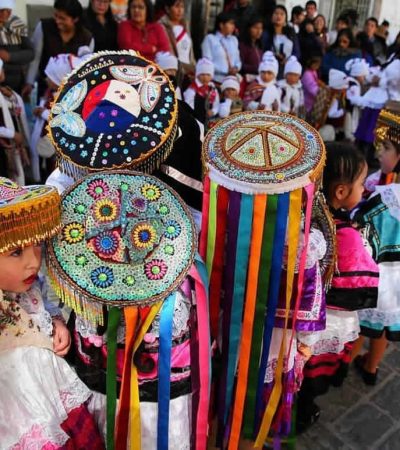
Image: @geramagne
The Imperial City is also filled with party and joy with water, foam, flour and colors to the rhythm of folk music performed by various bands and orchestras. Likewise, the groups of dancers with their colorful coach and their hosts dressed in typical costumes of the region are appreciated.
The popular “Yunzas” are also part of the Cusco carnival; these are trees adorned with gifts and surprises that the locals plant in the center of the party and then push it down and distribute the presents. At night, people walk and get together at the “food fairs” to try the delicious and traditional dishes of the area such as Cuy chactado, Puchero and Frutillada (an ancestral drink of the region based on fruits).
Carnival in Cajamarca
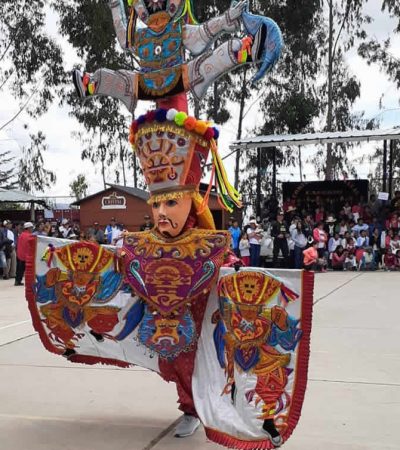
Image: @sorayavaleria29
The city of Cajamarca is known as the Capital of the Peruvian Carnival. The city enjoy 2 weeks of dances between the months of February and March to the rhythm of the music and the colors of the comparsas. Among them, the troupe of King Momo or Ño Carnavalón stands out, who is received with honors to later be veiled and buried. This giant doll represents “goodbye to bad energy”, so people celebrate its passage with talcum powder and painting colors in faces.
It is one of the most anticipated, representative and joyful festivals in Peru, where the entire Cajamarca people participate with an agenda full of cultural, entertainment and competition activities. During the days of festivities there are competitions of couplets (sung verses), patrols and parades; we enjoy the the allegorical “Corso” (Parade) and a beauty contest is realized among the women of the five neighborhoods of the city in order to choose the Queen of the Carnival.
In conclusion; the Peruvian Carnivals are the reunion with the roots and with the community. It is usually celebrated in the month of February and is a good pretext for Peruvians to be able to thank for the common good and the favors granted, as well as a reason to show the world the best of art and dancing of each Peruvian region.
Very interesting to know is also, that this celebration is unique in each city of Perú and alternates processions, fairs, parades and luxury gastronomy, as a sample of the living heritage of Peruvian culture. It is the result of centuries of miscegenation between Hispanic, African and indigenous customs.
In addition; there is not a week, when Peruvians are more willing to celebrate their culture, through their multiple dances, gastronomy, games and colorful clothing as in “Los Carnavales”.
Ready to celebrate Carnival in Peru?
Let Peru be the experience of your life!
#TravelwithGiardino #OneTripManyExperiences
Foto cabecera: Municipalidad provincial de Cajamarca
Source:
Ferrucci, F. (febrero de 2014). Historia del carnaval. (N. Martinez, Entrevistador)
Promperu: Carnavales más representativos.
joinnus. (30 de enero de 2018). Estos son-los-carnavales-que-no-te-puedes-perder-en-febrero.
BBVA: Carnavales en el Perú, de la sátira y la abundancia.

